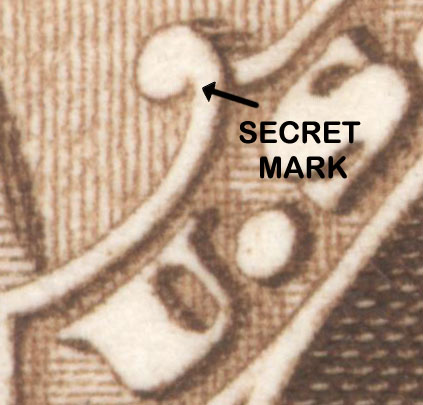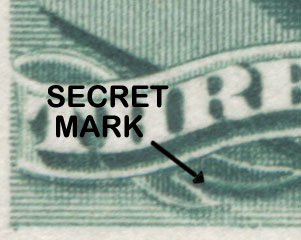
The Secret Marks on the Bank Notes of 1873 and 1879

Click on Button Below

In 1873, the contract for the printing of U.S. postage stamps was awarded to the Continental Bank Note Company. At that time, Continental took over some of the dies and plates used by the National Bank Note Company who had held the previous contract. In order to establish whether certain stamps had been printed by National or Continental, "secret" marks were added to many, if not all of the plates used to produce the Continental Bank Note stamps.
It must be noted that a "secret" mark has never been found on either the 24¢ or 90¢ stamp, and only on the American Bank Note Company printing of the 30¢ stamp. In fact, the 24¢ Continental is impossible to distinguish from the 24¢ National, other than a possible few copies printed on ribbed paper, presumed to have been used only by Continental. Only one stamp has ever been certified as the Continental, Scott 164, and it is of course clearly on ribbed paper. On many of the higher denominations the quality of the printing plate is evident; often the National stamps show a finer detail, especially on the earlier printings while the plates were still new. Many of the stamps are distinguishable by the color of ink used, and in fact, the only way the thirty and ninety cent stamps can be distinguished is by color.
The best way to recognize the "secret" marks is to actually see them. Click on a link above to see the secret mark for that denomination.





